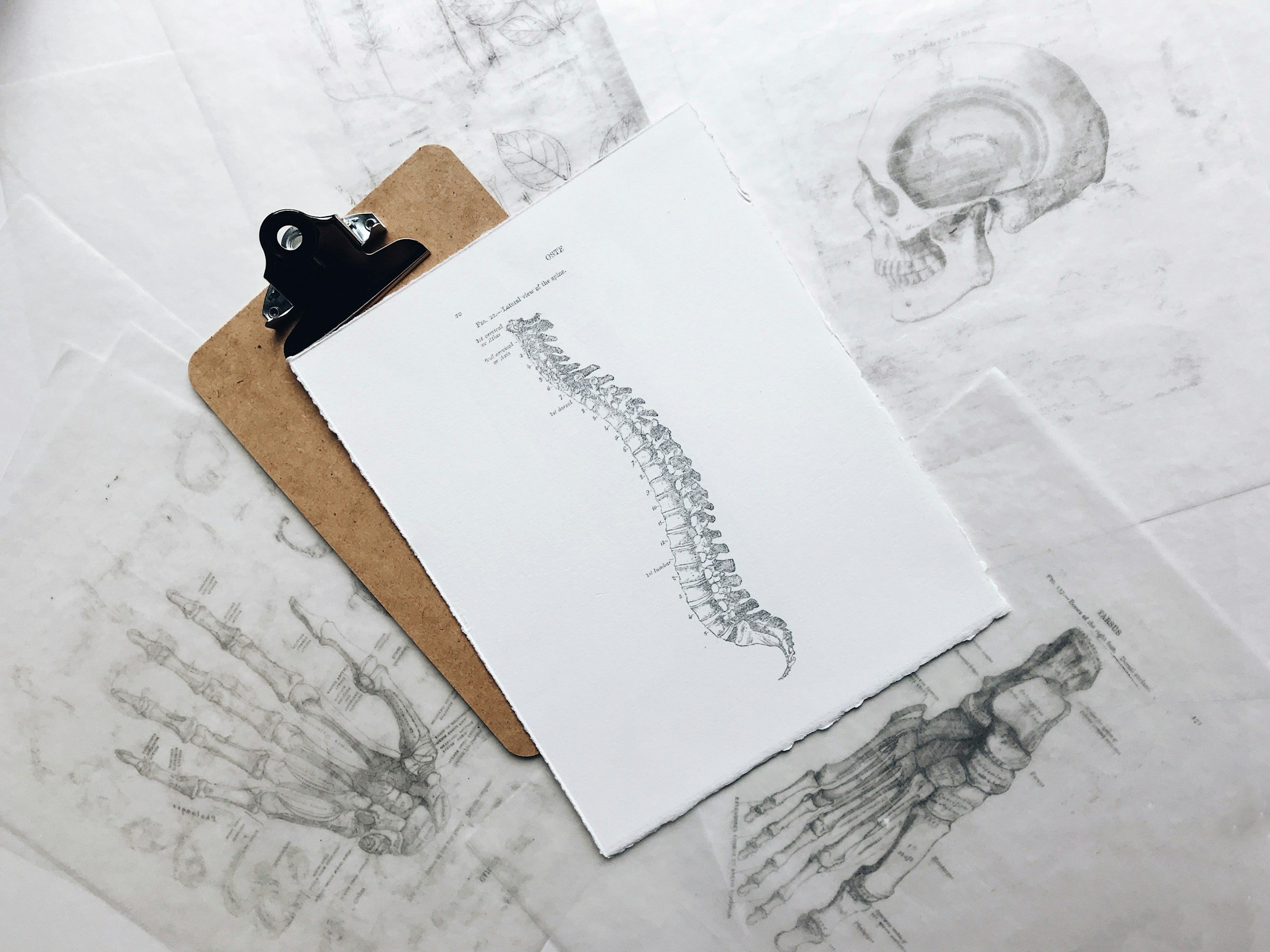
Our Technique
The Gonstead Method
With the Gonstead Method, we go beyond what many chiropractors consider a standard assessment of your spine. We conduct a thorough analysis using a multi-step process with advanced medical equipment. This analysis detects the presence of a vertebral subluxation complex, which is what happens when a spinal bone (vertebra) moves out of place and puts pressure on nerves.
To detect a subluxation we use the following five criteria:
-
Visualization is a simple but important part of our analysis. It all allows us to see how your body is doing as a whole. We’ll look for subtle changes in your posture, movement, and even the skin.
-
The instrument we use in the Gonstead System is called a Nervoscope. This tool detects uneven distributions of heat along the spine, which can indicate inflammation and nerve pressure. We guide the instrument down the length of your spine, which will feel like two fingers gently gliding down your back.
-
This is simply the process of feeling your spine in a stationary position. We feel for the presence of swelling/edema, tenderness, and any abnormal texture or tightness in the muscles and other tissues of your back.
-
This process involves feeling the spine during movement in various directions. This enables us to determine how well each segment in your spine moves relative to one another. This also helps us determine the specific position of a fixated segment.
-
X-ray films enable us to visualize the entire structure of your spine. We say that to see is to know, to not see is to guess, and we never want to guess with your health. These films help us evaluate posture, joint and disc integrity, and vertebral misalignments. They also allow us to rule out any pathologies, or recent fractures that may be present or contributing to your condition. These full-spine radiographs are taken in a standing, weight-bearing position not only to confirm our examination findings, but also to help us tailor care specifically to you.
Disc Centered
What is the vertebral disc?
The vertebral disc is like a fluid-filled pad between adjacent bones in the spine. Spinal movement works like a pump, maintaining healthy fluid inside the disc. Fixated vertebrae disrupt this process, and promote disc injury/degeneration.
Why is it important?
Vertebral discs are the primary weight-bearing structure in your spine. Any misalignment of a vertebra causes uneven weight distribution on the disc. This leads to joint degeneration and disc injuries (which you might know as bulges, herniations, or ruptures). As the foundation for spinal motion, a compromised disc is the primary component of a vertebral subluxation. This is why a Gonstead adjustment is specific to the disc, and avoids excess torque or rotation of the spine.
Nervous System Focused
Did you know that only about 10% of all the nerves in your body are for pain? The rest of these nerves communicate to every muscle, cell, and organ in your body. Signals from these tissues tell the brain how your body is doing, and the brain signals back with an appropriate response. This two-lane highway of communication serves to maintain proper function in every other system of the body. For that reason, we at Rise believe in an above-down and inside-out approach to health. This refers to the function of your brain and spinal cord as the control center of the body, from which all health and healing flows. When minor repetitive habits, injuries/traumas, toxins, or even mental stress cause spinal misalignment, it puts pressure on the nerves, and disrupts communication. The resulting dysfunction and symptoms may present in areas that you wouldn’t expect, including the heart and lungs, immune system, digestion, reproductive organs, and so much more.
Our goal at Rise is to find the root cause of the symptoms you are experiencing. We aim to to be as specific and accurate as possible when correcting the misalignments in your spine, so that your body can express optimal health through a freely functioning nervous system.
What is a Subluxation?
“Subluxation” is an all-encompassing term used to describe a vertebra that has become stuck in a misaligned position, putting pressure on nerves, and producing dysfunction as a result of interference with nerve communication.




